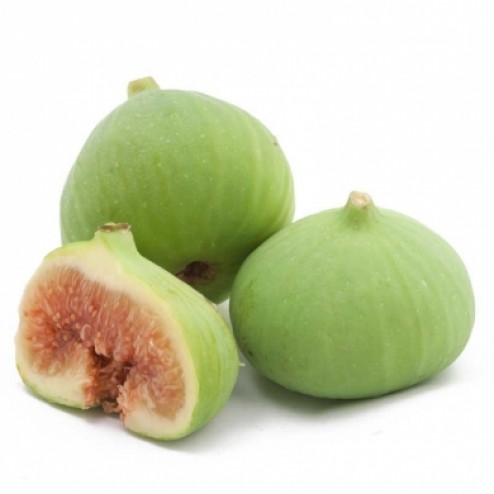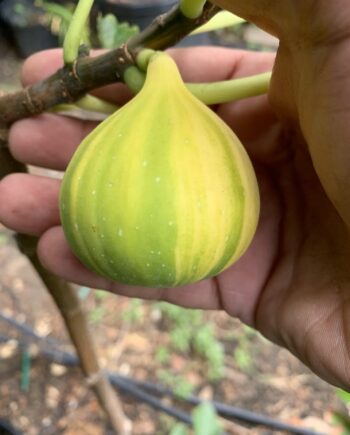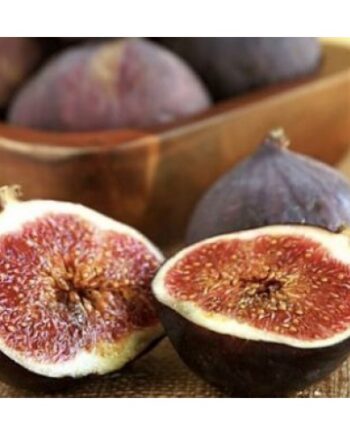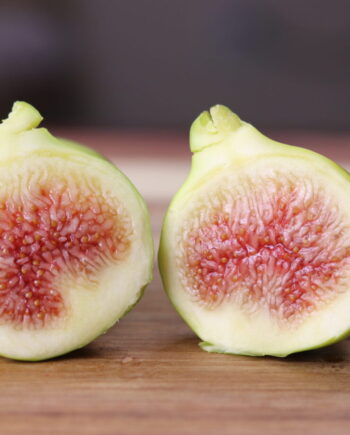Italian Genoa Fig Tree
The Italian Genoa fig tree produces very popular, large green to yellow fruit. The flesh is sweet, juicy, and very creamy and delicious. Prune to any shape. 100 Chill Hours. Self-Fruitful.
Not compatible with your zone (2a)
General Plant Information
The Italian Genoa Fig Tree produces large, popular green to yellow fruit with sweet, juicy, and creamy flesh. Prune it to your preferred shape. This tree requires 100 chill hours and is self-fruitful, reaching a height of 15 to 30 feet (4.5 to 9 meters). Overall, the Italian Genoa Fig Tree is cherished for its exceptional figs and ornamental elegance.
Fruit and Tree Description
First and foremost, the Italian Genoa Fig Tree produces large, bell-shaped figs with unique greenish-yellow skin when ripe. These figs offer a luscious, honey-like sweetness and a smooth, tender texture, making them perfect for fresh consumption.
In addition, as a deciduous tree, they boast an attractive, spreading growth habit. It can reach a height of 15 to 30 feet (4.5 to 9 meters) and is adorned with broad, lobed leaves that are a vibrant green, further adding to its ornamental value.
History of the Italian Genoa Fig Tree
Turning to its history, the Italian Genoa Fig Tree has been cultivated in the Mediterranean region for thousands of years. Ancient civilizations like the Greeks and Romans highly valued figs for their delicious taste, nutritional benefits, and medicinal properties. Specifically, this fig variety is named after the city of Genoa in Italy, where it has been cultivated for centuries. As a result, it has become a symbol of the region’s long-standing association with figs. Over time, the Italian Genoa Fig gained popularity beyond Italy, captivating gardeners and fruit enthusiasts worldwide with its delectable fruit and ornamental beauty.
Cultural Significance
Furthermore, in Mediterranean cultures, figs have symbolized abundance, fertility, and prosperity. Ancient mythology and religious texts often ascribe symbolic meanings to figs. Today, it remains a cherished choice in regions with suitable climates, continuing to captivate those who appreciate its exceptional taste and its deep connections to Mediterranean traditions.
Uses of Italian Genoa Figs
Finally, when it comes to uses, enjoy these figs fresh to fully savor their natural sweetness. They pair perfectly with cheese, enhance salads, and serve as a delightful topping for desserts. Additionally, the abundant harvest is ideal for preserving and drying, offering a nutritious and delicious snack year-round. The high sugar content of Italian Genoa figs also makes them perfect for creating flavorful and aromatic jams, preserves, and chutneys. Use them on toast, paired with cheeses, or as condiments. Figs also add natural sweetness and unique flavor to salads, desserts, and baked goods.
Additional Information
Harvest Time : FallPlant Type: Deciduous
Zones: 7-9
Planting Information
Soil and Planting: Plant in soil that drains well. Dig a hole that is as deep as the tree’s roots and at least twice as wide.
Place the tree in the hole and backfill around the plant’s roots with a mixture of the native soil and high-quality planting mix that has washed sand and organic fertilizer.
Create a basin around the roots drip zone so that water collects. Water deeply until the roots and nearby soil is saturated and reaches field capacity.









